As the stadium debate unfolded in Memphis this year, Randy Alexander paid close attention, but he felt more like a pawn than a player.
Alexander was especially interested in the issue of handicap accessibility and the Americans With Disabilities Act (ADA). He is community organizer for the Memphis Center for Independent Living, a United Way agency that works on accessibility issues, and has been a wheelchair user since a spinal-cord injury in 1992.
When Mayor Willie Herenton unveiled his proposal on January 1st, the mayor said the cost of fixing up Liberty Bowl Memorial Stadium, including meeting ADA standards, might be more than $50 million and could result in a loss of 14,000 seats. He offered no documentation, but suggested that demolition of the Liberty Bowl and construction of a new stadium ought to be considered. A feasibility study has since put the costs at as much as $217 million for a new stadium and $21 million to $265 million — a staggering $4,000 per seat — for renovating the old one.
“I feel like they are using us,” Alexander said. “He [the mayor] started talking about how much it was going to cost, so he could build a new stadium.”
Interviews with several Memphis wheelchair users found a lot of interest in the stadium debate, but most had had little if any input. None of the people the Flyer interviewed for this story has been contacted by city administrators, the stadium consultants, or the U.S. Department of Justice officials who will decide what steps must be taken to make the Liberty Bowl compliant with federal law. Wheelchair users disagreed about tactics but agreed on this point: Memphis does not need a new stadium. And not one of them could recall a game when every existing wheelchair space was used by a handicapped person.
While Herenton, members of the media, contractors, consultants, and promoters who would benefit from a new stadium or expensive renovations trash the Liberty Bowl in the name of the Americans With Disabilities Act, there is less publicized but significant support for a fix-up at a modest price. Interviews with wheelchair users and city officials who have recently met with representatives of the Justice Department suggest that the real cost of accessibility improvements at the Liberty Bowl could be less than $5 million.
“They had no place to put us.”
The issue of stadium accessibility has been around almost as long as the Liberty Bowl itself, which was built in 1964. Memphian Terry Phillips, 58, was paralyzed from being shot in the Vietnam War in 1968. He recalls going to games in the early 1970s and sitting at the side of the field, along with as many as 60 other fans in wheelchairs.
“When the band came out, they would push us all out and put us on the field,” said Phillips, who has attended more than 100 games at the Liberty Bowl and was active for several years in the Mid-South Paralyzed Veterans Association (PVA). “They had no place to put us. So when we got the chance and we got the power, we sued them to make sure we could sit up in the stands with the rest of the people and enjoy the game.”
In 1988, U.S. district judge Robert McRae signed a consent agreement between the city and the Paralyzed Veterans Association boosting the number of wheelchair seats from 65 to 133. In 1991, the ADA law was passed, and in 2005, the city reached a settlement agreement with the Justice Department on the accessibility of 60 city buildings, including the stadium.
Wheelchair seating at the stadium is about one-third of the way up the bleachers in a half-circle from the north end zone and along the visitor’s side of the field. Thanks to previous improvements, there is enough space behind the seats so that when one person leaves, everyone else does not have to move. At present, there are no companion seats. Those accompanying someone in a wheelchair are given plastic chairs, so the 133 spaces can accommodate 66 wheelchairs if each brings a companion.
The upper-end cost estimates of making the stadium comply with the ADA come from a strict reading of the rules. Lest anyone doubt the seriousness of the federal government’s enforcement of the ADA, consider the predicament of the University of Michigan in Ann Arbor, where the country’s largest college football stadium (107,000 seats) is under renovation. The university’s battle with the federal Department of Education and the Justice Department over handicapped seating has become as nasty as its on-field rivalry with Ohio State, only more expensive. A recent headline in the Detroit News read, “Stadium: It’s U.S. vs. U.M.”
In October, the Department of Education threatened to cut off federal financial aid to the 39,700-student university if the school doesn’t make 1 percent of the seats (1,070 seats) in “The Big House” accessible, as required by the ADA. The university has countered with an offer to increase wheelchair seating from 88 to 592 by 2010.
There is at least one obvious difference between that U.M. up north and our U.M.: Michigan has sold out every game for more than 30 years. The University of Memphis is lucky to sell out one game a year, and it is not uncommon to see more than half of the stadium seats empty.
“I have never ever seen all the wheelchair seats sold out at any football game in Liberty Bowl Memorial Stadium in more than 30 years,” said Phillips, who thinks the current allotment, plus an equal number of “companion” seats, is “absolutely sufficient.”
 Justin Fox Burks
Justin Fox Burks
Bill Dorsey, 76, who also has been active in the Mid-South PVA but rarely goes to football games, agrees that the current number of wheelchair seats is probably enough.
“The handicapped go to basketball games much more than football games,” he said. “I think it is the weather, to be honest.”
Dorsey thinks there are more important accessibility issues.
“I have been in Minneapolis where I could get on a bus, go to a mall, shop, and get on another bus back to within a block of my hotel,” he said. “I cannot do that in Memphis, and there are a lot of other things I can’t do here that I can do in other cities.”
The Memphis Center for Independent Living gave the city of Memphis and Shelby County “ADA Report Cards” last year. Both governments got an “F” in employment, education, and citizenship and a “D” in construction and curb cuts. A “D” means “trying to comply with the ADA only after being sued.” The highest grade given was a “C” in transportation for “doing just enough to avoid lawsuits.”
Memphian Bobby Brooks, 34, said the biggest problem for him at the stadium is finding someone on the stadium staff to assist him to his wheelchair seat.
“It’s a good seat, but it’s kind of inconvenient getting there,” he said.
Sam Allen, 21, a junior at Christian Brothers University, attended a soccer game and the Bridges preseason high school football games at the stadium. Like Brooks, Allen said the only drawback was the difficulty that he and a companion had finding a stadium employee knowledgeable about companion seats. The addition of companion seats to meet the current demand, he believes, would fix that problem.
“I plan to start going to more games if they make the proper changes,” he said.
Ray Godman, 79, who has used a wheelchair since being wounded in the Korean War in 1951, has had season football tickets since 1964. The former drag racer and owner of Godman Hi-Performance likes to tell people who come to him complaining and looking for sympathy to “check Webster’s between shit and syphilis.” He has no use for talk of a new stadium.
“Herenton and his group have got their reasons to disregard the stadium and spend a lot of money they don’t have,” he said. “I think it could be modified very easily to be made more accessible. I don’t hear anybody who sits around me complaining about accessibility of the stadium other than the fact that companion chairs are not available. You have got to apply common horse sense whether you are on your feet or in a wheelchair.”
Hope for a “reasonable” solution
Can common sense prevail over litigation and a literal interpretation of the ADA law? There are recent indications that a compromise may indeed be reached and that the Liberty Bowl will stay in service for several more years.
Following a recent visit by representatives of the Justice Department, city officials seem optimistic that renovation costs could be substantially lower than originally estimated. In one scenario, increasing ADA accessibility would cost less than $5 million. That option would increase the number of wheelchair spaces from 133 to 219, plus add 219 “companion” seats that currently don’t exist. Stadium capacity would decrease from 61,641 to 59,527, which is likely to be acceptable to sponsors of the Southern Heritage Classic and the AutoZone Liberty Bowl Football Classic.
Cindy Buchanan, executive director of the Memphis Park Commission, which is responsible for the stadium, said that prospective solution, while less than the number of accessible seats required by the letter of the law, might satisfy the Department of Justice because the Liberty Bowl is rarely full.
“The only games this season where we used all available wheelchair spaces were Ole Miss and the Southern Heritage Classic,” she said.
The people using the spaces had various disabilities that required wheelchairs, canes, and walkers. Buchanan, who attends most home games, estimates that there are usually about 30 fans in wheelchairs. In November, she went to the University of Memphis versus East Carolina game with a Justice Department representative and an architect. They looked at existing wheelchair seating, proposed new seating, restrooms, concessions, and overall access.
 Justin Fox Burks
Justin Fox Burks
On the issue of accessibility: Randy Alexander (left) and Terry Phillips
“I have found them [the Justice Department] to be reasonable and practical,” she said. “It is probably not possible for such an old building to meet the letter of the law, so what they’re trying to do is look at operations and attendance and figure out how many seats are reasonable.”
At one point, the Department of Justice representative, according to Buchanan, commented that it made little sense to put wheelchair seats at the upper rows of the stadium given the cost. The letter of the law requires not only that 1 percent of the total number of seats be handicap-accessible but that they be dispersed throughout the stadium.
Robert Lipscomb, who has been the city administration’s point man on the redevelopment of the Mid-South Fairgrounds, is optimistic that a compromise can be reached. Resolving the stadium issue — new stadium, refurbished stadium, and how much money — could make it easier to get on with the overall project, which includes the Mid-South Coliseum and the land used by LibertyLand and the Mid-South Fair.
“I am getting a sense that the Justice Department is being open and friendly to the city and saying it is not as bad as originally thought,” Lipscomb said.
The city has $16 million in the capital improvements budget for the next five years for stadium improvements, including accessibility and refurbishing the concessions, press box, and skyboxes. The “halo” around the stadium, as architects call it, will also be cleaned up and made more attractive for tent parties and tailgating.
“The mayor has never said it has to be a new stadium or nothing,” Lipscomb said. “He has always said that alternatives had to be looked at.” He expects to hear from the Justice Department within 50 days.
Randy Alexander, who doesn’t go to the football games, concedes that if 1 percent of the stadium seats were made accessible, many of them would probably go unused. But, he said, “that’s the wrong question.”
“There is approximately 75 percent unemployment among the disabled,” he said. “As we grow in the community, 10 years from now is it possible to fill all those seats? I think so. We are still struggling to become a middle-class community.”
Alexander and Phillips sharply disagree about strategy as well as stadium needs. Phillips believes publicity stunts such as wheelchair users chaining themselves to gates or buses are counterproductive. He is particularly critical of a disability rights group called ADAPT, which has sometimes used radical tactics since it was founded in Colorado in 1983 as American Disabled for Accessible Public Transit.
 Justin Fox Burks
Justin Fox Burks
Terry Phillips and Randy Alexander disagree about strategy and stadium needs.
“ADAPT and PVA are like night and day,” Phillips said. “They once said PVA stands for pissy venal assholes.”
Alexander and Phillips had not met prior to posing for pictures for this story. On a chilly morning last week, Alexander took a city bus from his office at the Center for Independent Living to the Southern Avenue entrance to the Mid-South Fairgrounds, then rode his motorized wheelchair across a wide expanse of parking lots outside the stadium. Phillips drove up a few minutes later in his customized mini-van equipped with a wheelchair lift. They talked as the Flyer photographer took pictures inside and outside the stadium. It was not until Phillips was about to get back into his van that he noticed Alexander’s blue ski cap had the ADAPT acronym on it.
“Come on,” Phillips growled, shaking his head. “Get in and I’ll haul your ass downtown.”
Alexander rolled up the ramp for the ride back to work.
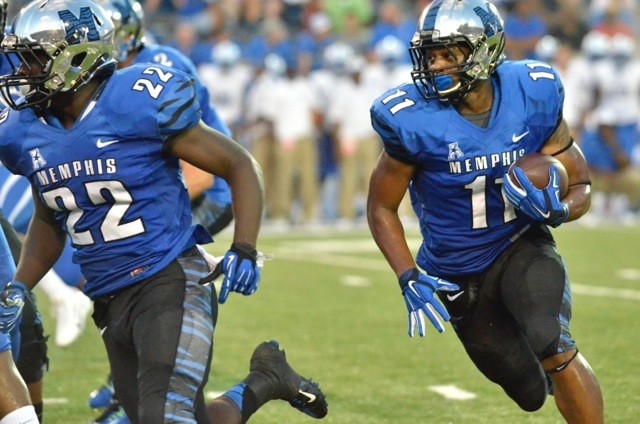
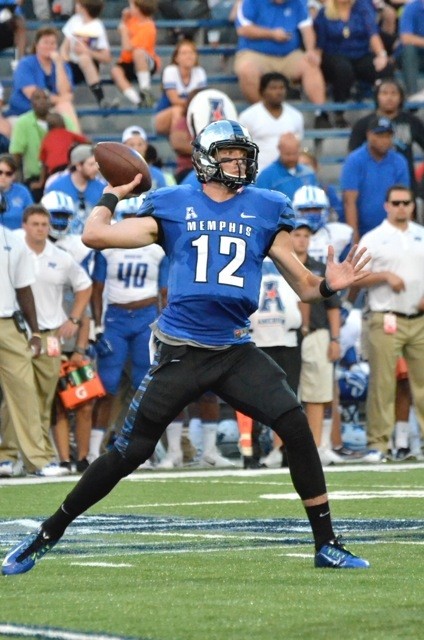
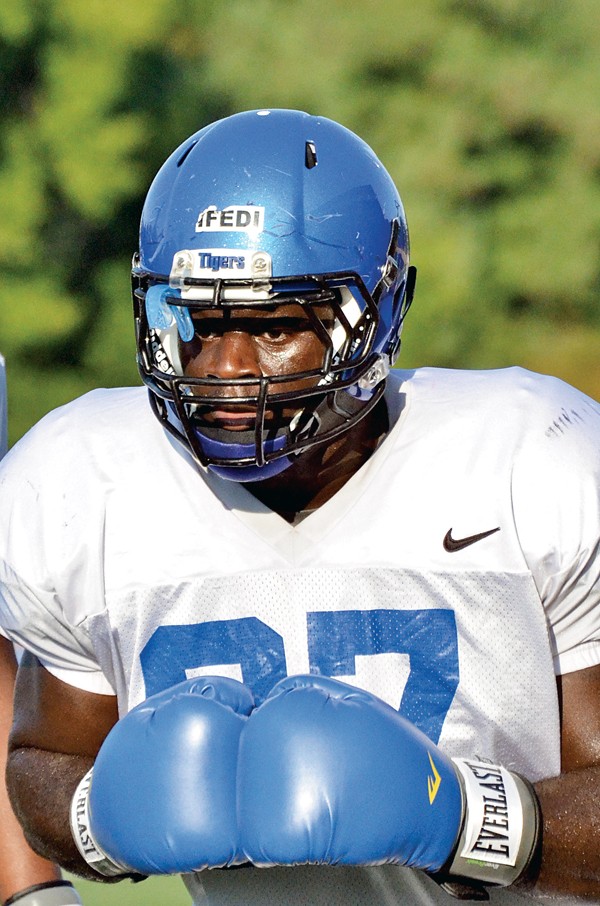 Larry Kuzniewski
Larry Kuzniewski 
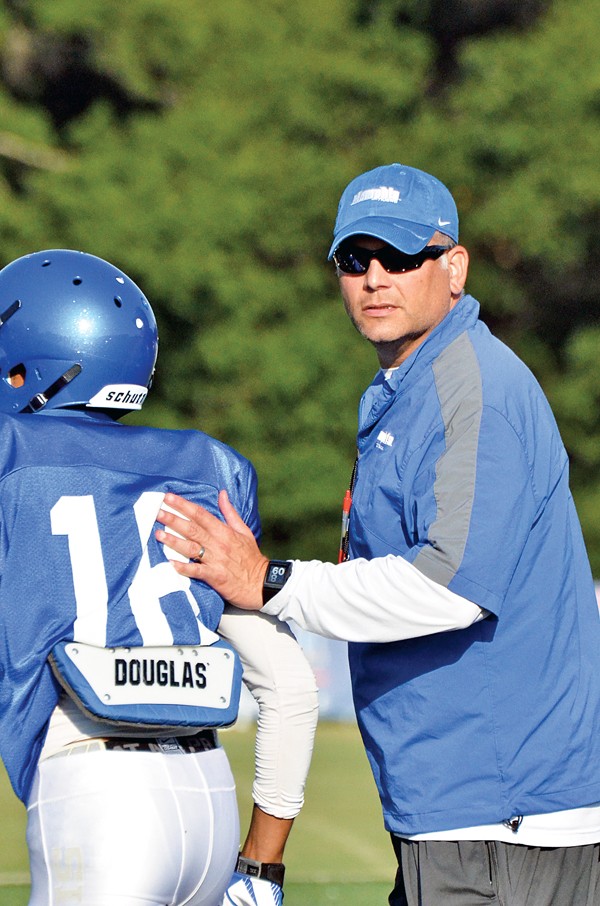 Larry Kuzniewski
Larry Kuzniewski  Joe Murphy
Joe Murphy 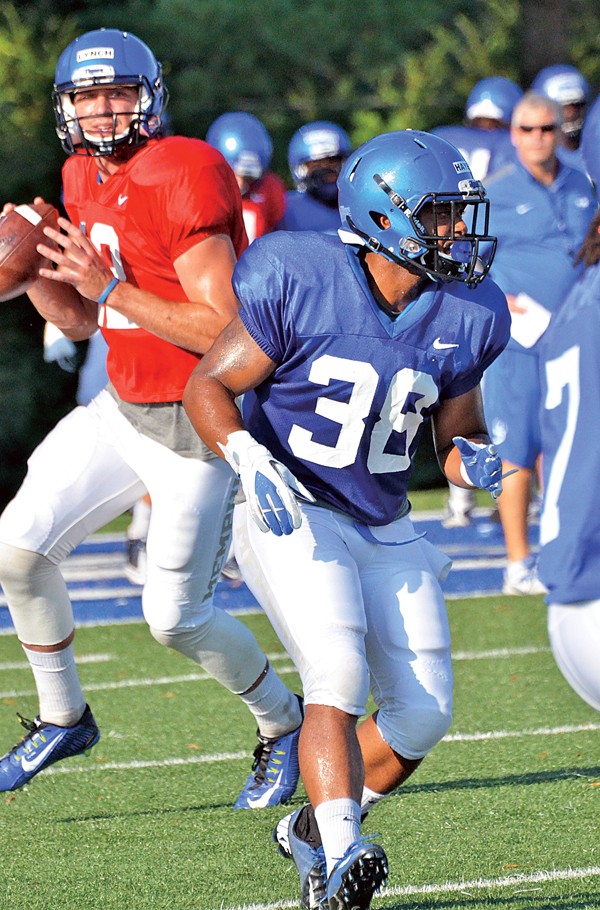 Larry Kuzniewski
Larry Kuzniewski 

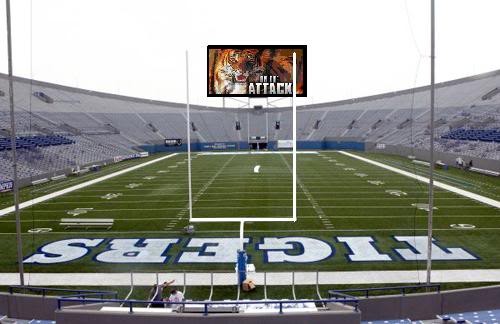
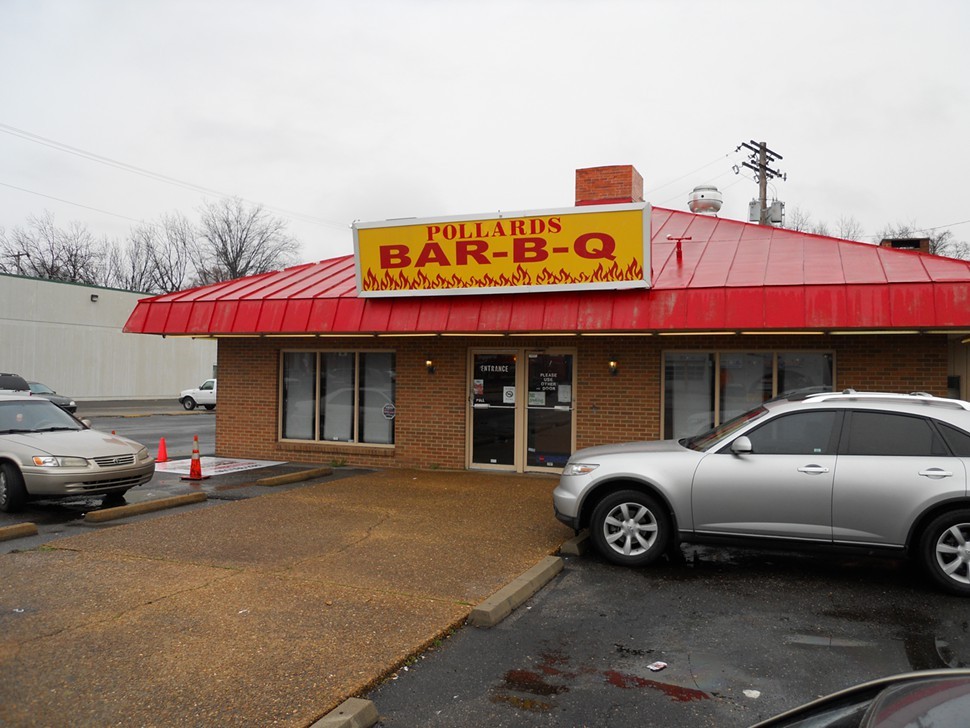
 Justin Fox Burks
Justin Fox Burks  Justin Fox Burks
Justin Fox Burks  Justin Fox Burks
Justin Fox Burks